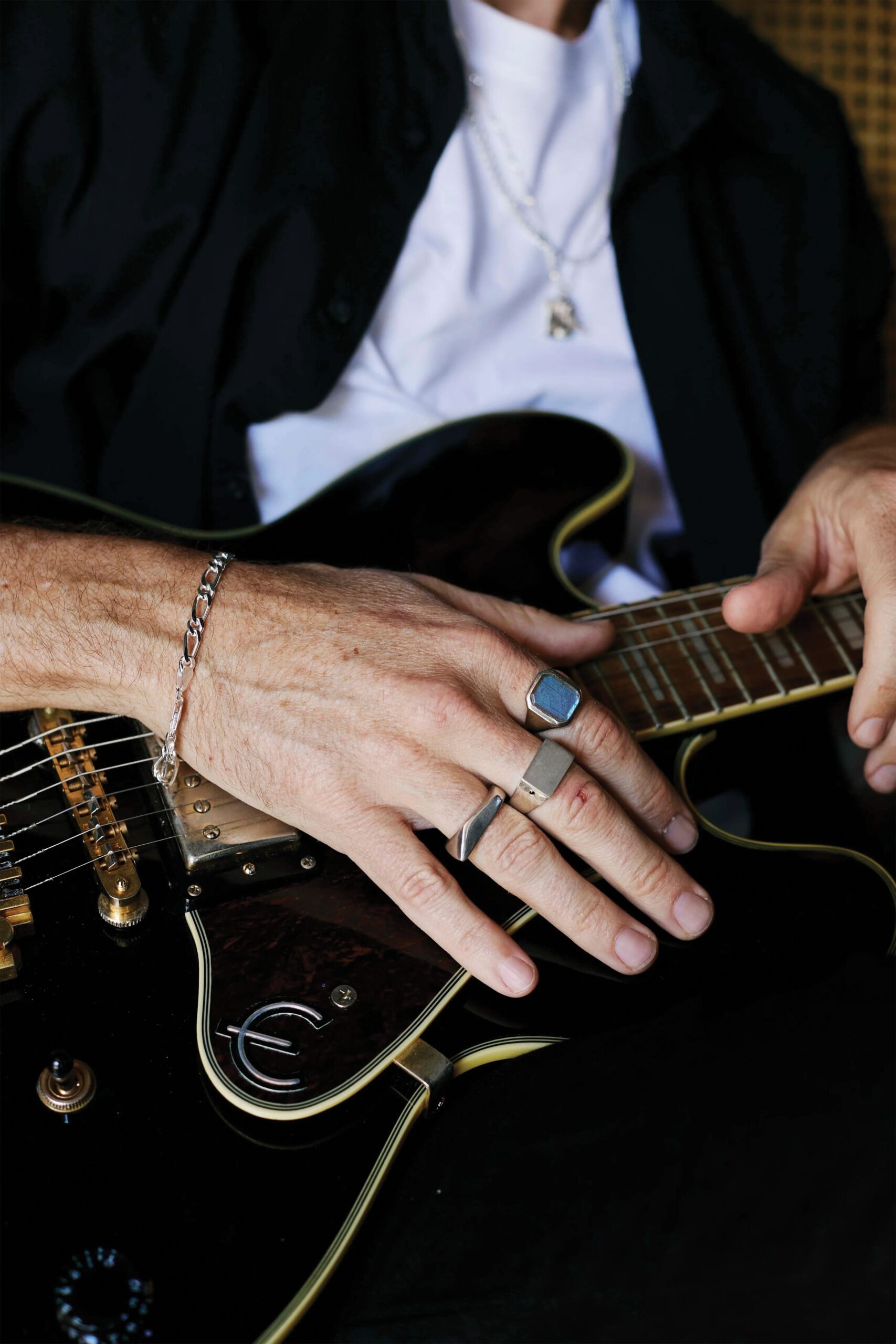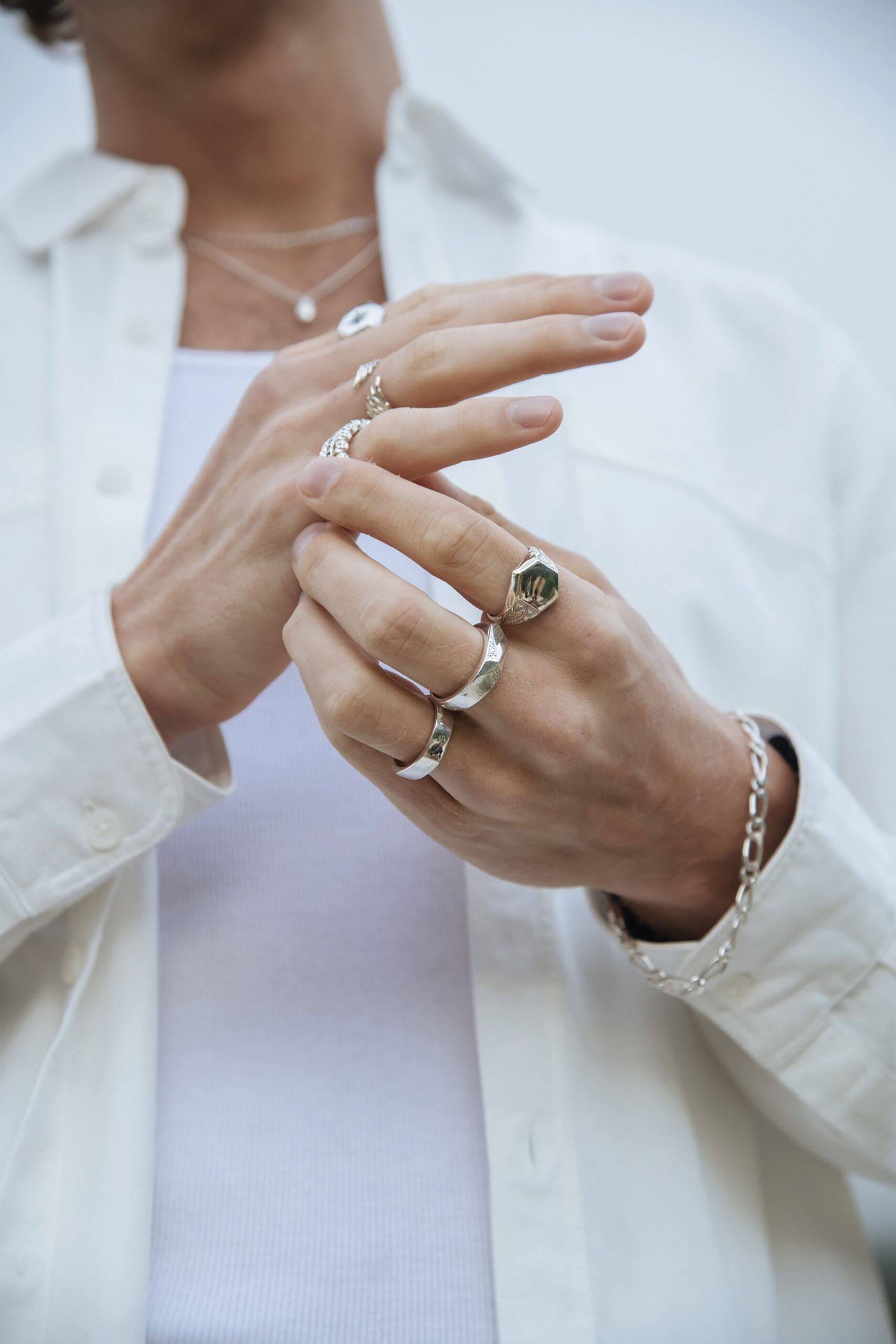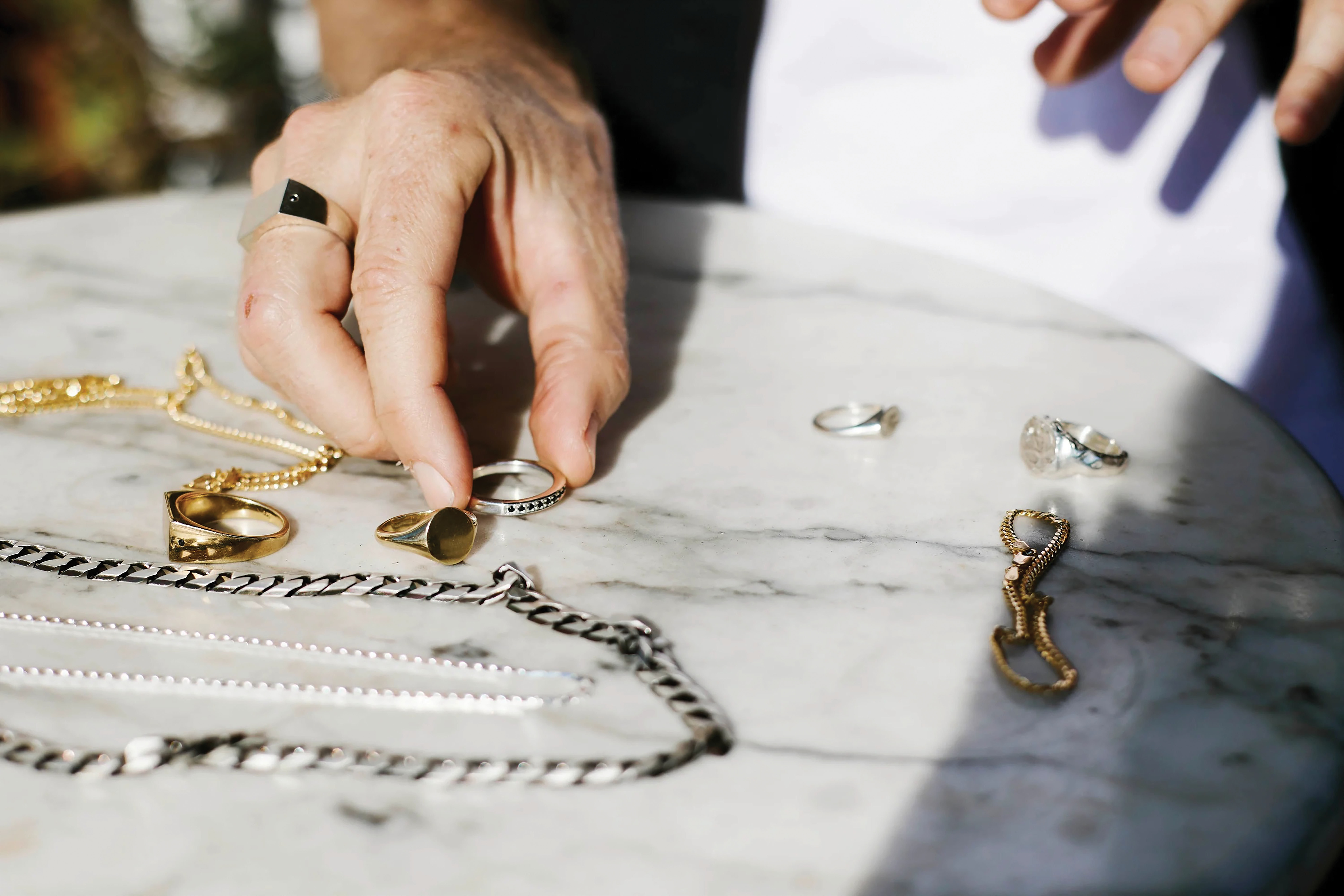

Symbol: Accessores such as braces, necklaces and rings have madeth the man for many a century…
By Mpumi Brown
When one thinks of necklines, wrists and fingers being adorned by jewellery, one can’t help but to imagine a lady in that picture, but thanks to male celebrities like our watermelon-sugar-high, pearl necklace wearer Harry Styles or the epic jewellery layering by Lenny Kravitz in the 90’s, jewellery is a now-more-than-ever-must-have item for any fashionable man.
Anything from a simple single chain like ‘the Beibs’, or a stack of solid silver rings, chunky watches and necklaces like Mr Johnny Depp, the best-dressed men always incorporate some bling in their looks.
Jewellery designer Kristin Weixelbaumer of Black Betty, chats to us about the evolution of male jewellery and how the use of accessories by men dates back to ancient times, and has evolved over time in different cultures and societies.
Ancient civilizations: Men in ancient Egypt, Greece, and Rome often wore jewellery as a sign of status and wealth. This included rings, bracelets, necklaces, and earrings. In many cases, the materials used for these pieces were gold, silver, and precious gemstones
Medieval Europe: During the Middle Ages, men’s jewellery was often limited to signet rings and brooches. These pieces were used to signify one’s allegiance to a particular lord or king.

Renaissance: During the Renaissance, men’s jewellery became more elaborate, with necklaces, bracelets, and rings featuring intricate designs and symbols.
This was a time when men often wore ornate clothing and accessories as a display of their wealth and social status. Victorian: In the 19th century, men’s jewellery became more subdued, with simpler designs and materials such as gold, silver, and black onyx. This was a time when men’s fashion became more conservative, and the focus shifted away from ostentatious displays of wealth.
Modern: In the 20th century, men’s jewellery experienced a resurgence in popularity, with more varied designs and materials. This included the use of leather, stainless steel, and other non-traditional materials. Men also began wearing earrings more commonly, often in a single ear as a symbol of rebellion or personal expression.
Weixelbaumer says while jewellery has always been a way to express one’s personal style and identity, it has also been used to signify one’s position in society, and this has changed over time and that the evolution of male jewellery reflects changing attitudes towards gender and social status throughout history.
Published on the 93rd Edition.




























